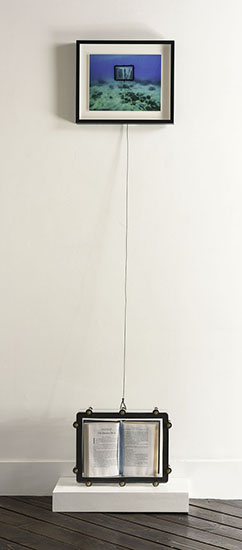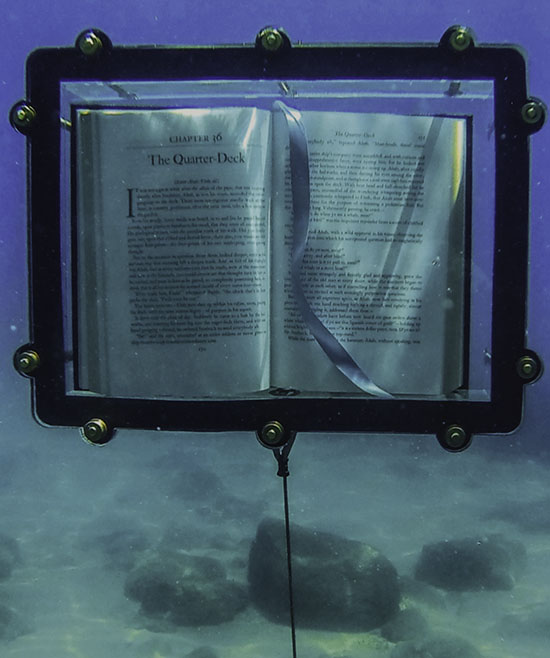
Double Echo, Chris Drury, Inkjet print with UV coating, 54.25″ x 46.25″ x 2.75″, 2007, Echogram, Echocardiogram, (edition of 4). Photo by Tom Grotta
We are heading to New York City tomorrow to set up for art on paper at Pier 36. Among the works we’ll be exhibiting is Chris Drury’s Double Echo, an inkjet print that merges a human echocardiogram and and echogram of Antartica, accompanied by the actual echocardiogram and the echogram on wooden spools. In 2006 and 2007, Drury spent more than two months with the British Antarctic Survey in Antarctica as artist-in-residence. The scientists there were looking at what they stood upon but could not see – the structure of the ice and underlying land formation. In parts of Antarctica the ice is four kilometers deep 900,000 years old – as old as our earliest ancestors. One of the scientists, Hugh Corr, described the remarkable images that result as like a “heartbeat of the Earth.” The fragment of an echogram in Double Echo is from Flight W34 over East Antarctica – a long cross-section of the ice beneath the flight, made by radar pulses sent down though the ice and back up into a computer in the aircraft. The echocardiogram is of the pilot’s heartbeat, superimposed over the top. An echocardiogram is very similar in technology to an echogram although it uses ultrasound rather than radar.
For some time, Drury has been looking at systems in the body and on the planet, particularly systems of blood flow in the heart. He was invited by the heart surgeon, Mark Dancy, to make a blood flow courtyard (Echoes of the Heart) at Central Middlesex Hospital, adjoining the Cardiac ward. It was Dancy’s department that agreed to do an echocardiogram on the pilot who flew those echogram flights in Antarctica and so enabled Drury to make the work Double Echo. A print from that series hangs on the walls of that particular ward. The hours of the exhibition are Friday, March 4th and Saturday, March 5th, 11 – 7 p.m.; Sunday, March 6th, 12 – 6 p.m. There is a Preview, benefiting the Brooklyn Museum, Thursday, March 3rd, from 6 – 10 p.m. For ticket and other information visit: http://thepaperfair.com/ny/for-visitors/fair-dates-hours-location/.



